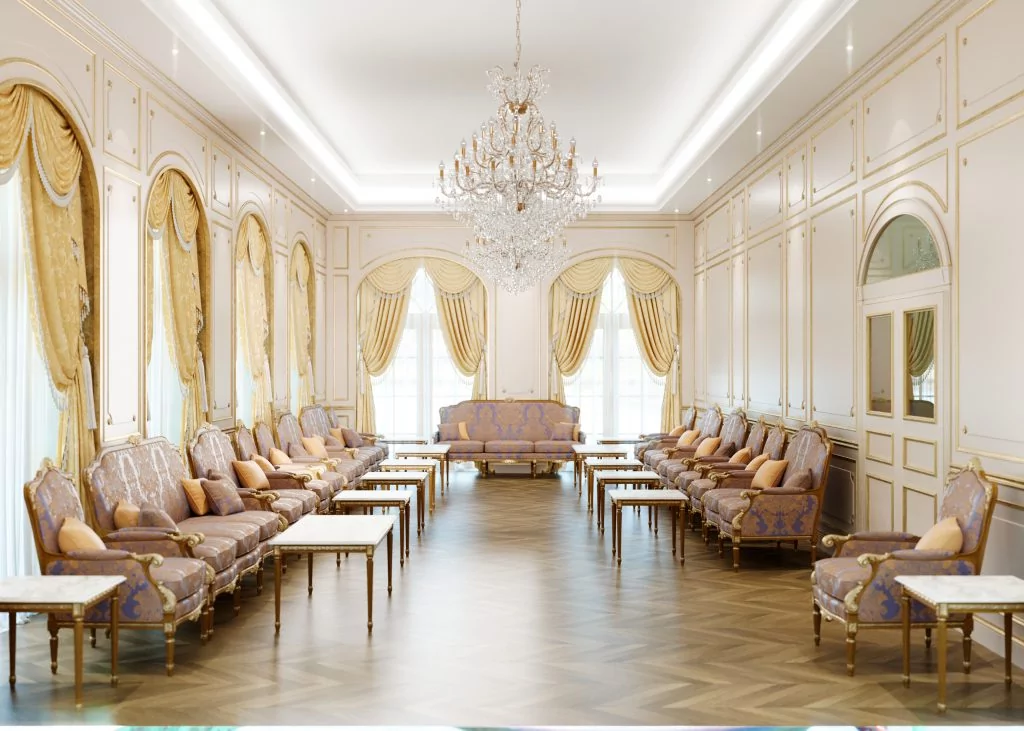Angelo Cappellini, producer of essential and timeless furniture, relies on Go!SCAN 3D when it comes to developing exclusive furniture drawings.
Established in 1886, the Italian furniture design company Angelo Cappellini is an internationally renowned brand for essential and timeless classic furniture.
The production process comprises both artisanal and industrial phases. Even if the full expression of the company’s expertise is manual wood carving, a traditional and artistic technique as well as an important “Made in Italy” heritage are maintained.
Formal research, excellence of craftsmanship, quality of production, ability to develop turnkey projects in the retail, hospitality, residential and nautical areas, are the factors that have allowed Angelo Cappellini to conquer new markets, and to establish itself in the international furniture design landscape.
Elaboration of Executive 3D Drawings for CNC Program Development
A customer from the Middle East asked Angelo Cappellini to reproduce the furniture of a meeting room (Majlis). For this project, the customer chose several of Angelo Cappellini’s standard products but wanted to incorporate a few customizations.
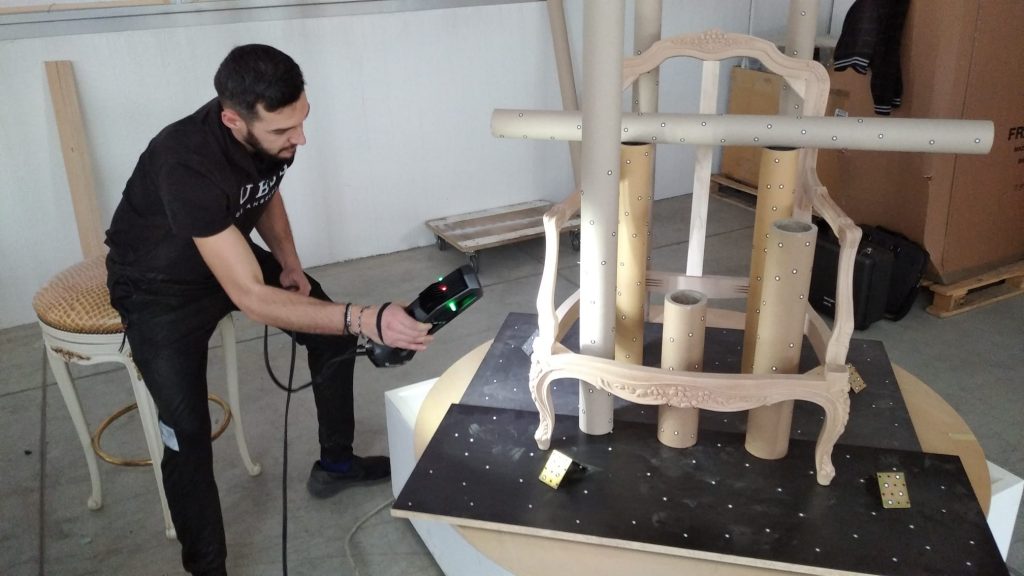
The project had many dimensions. The first objective was to detect the exact curves of the various elements to develop the executive drawings and obtain the 3D geometrical information necessary for the development of CNC programs.
The first step consisted in scanning the different furniture items with the Go!SCAN SPARK. To avoid applying positioning targets on the furniture, a jig held the targets, and the furniture piece to be scanned was put on a self-rotating base.
The scan data was imported into Rhinoceros 3D. Based on the mesh, Angelo Cappellini created customized carvings and decorations for each standard furniture which were then transferred to ALPHACAM and to the CNC machine.
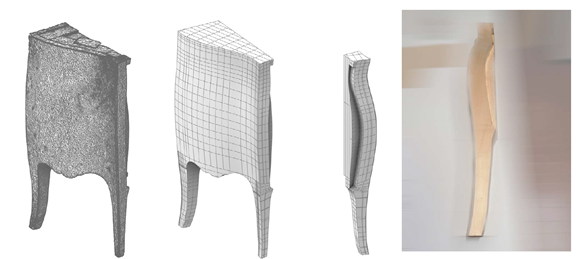
Angelo Cappellini then modeled the room with furniture and proceeded with simulation renders and animations.

Another objective of the project was to get a clean 3D mesh to use during presentations. As technology improves, Angelo Cappellini’s customers want to have more spectacular projects and presentations as well. To astonish them with their work, the company wanted to recreate the client’s thoughts and imaginations in the most realistic way. The purpose was to engage the client in their own project. Additionally, for the company’s salespeople it’s much easier to explain and sell the products with catchy presentations. The same technology is also used for marketing purposes like advertising and social media posts. On top of this, Angelo Cappellini is now also developing virtual reality (VR) immersions through which the customer will be able to walk virtually through his future home.
3D Scanner Provides Technical Advantage and Considerable Time Savings
For the past 135 years, Angelo Cappellini worked almost exclusively with cardboard templates or sheets of plotter for its various projects and surveys. This method lacked in accuracy and often the 2D digital render required a lot of time and was not accurate. Obviously, no 3D development was possible. Now, the Go!SCAN SPARK, with the VXelements 3D scan acquisition software and VXmodel Scan-to-CAD software module to clean up the mesh, speeds up the process and especially brings precise results of curves in a three-dimensional space. Achieving such realistic renders would not have been possible without a 3D scanner. The device is used in the production site, where a dedicated space has been set up with all the necessary tools.
Thanks to the Go!SCAN 3D Angelo Cappellini is now able to scan even the most complex parts (full 360° around the object) in only a few hours. Modeling a piece of furniture from scratch would usually take 3 to 4 days. Sometimes they simply scan single components and assemble the furniture right away in the software.
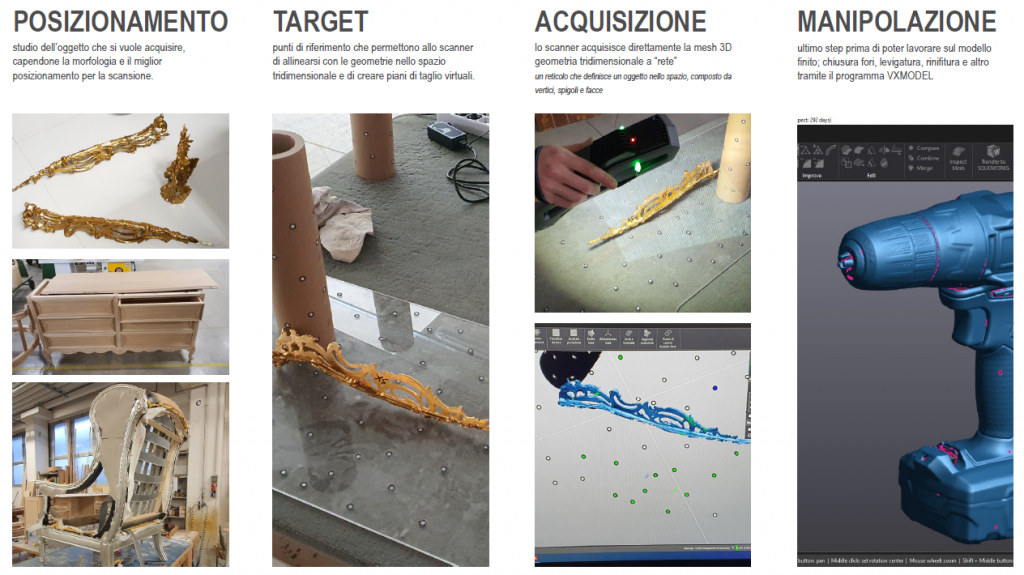
Evgeny Khutoryanskiy, head of design and technical department at Angelo Cappellini is happy: “The speed of acquisition, the accuracy, the cleanliness of the mesh and the possibility of having a portable and versatile tool convinced us up from the beginning and made us choose this Creaform technology. In one year of using the tool, we were able to scan and draw all the 2D executive tables and 3D models of about 200 products. In the previous 135 years, not a single one had ever been done.”
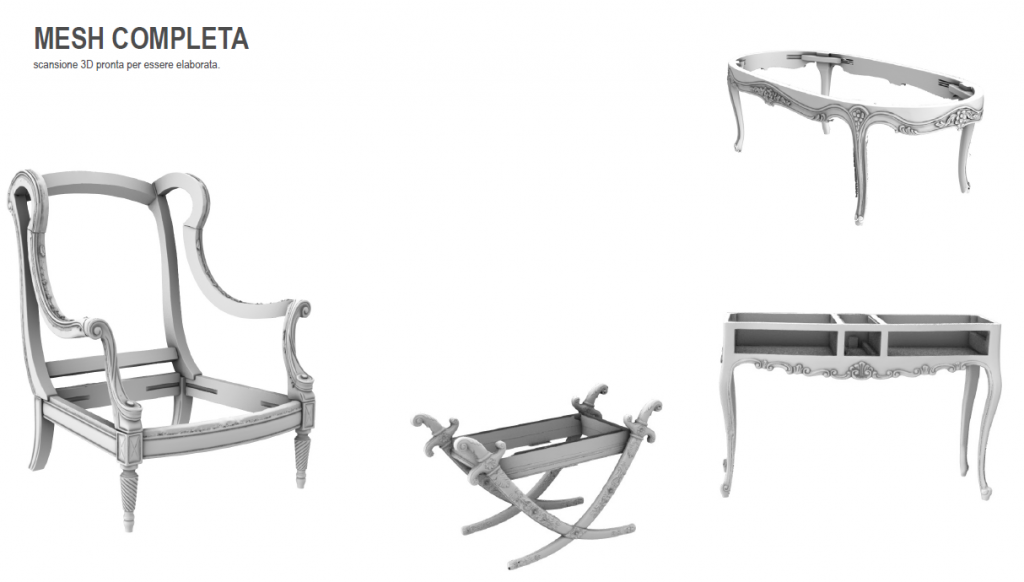
“The drawings we now supply to our customers have a possible margin of error of a few tenths of a millimeter. Go back two years, and there were errors that could be measured in centimeters,” deplores Evgeny Khutoryanskiy. “Thanks to 3D scanning, we can now quickly develop and replicate products that were traditionally modeled using a pantograph. The projects we present have a very high degree of realism, whereas before they were only plans and photographic presentations. I think that today we are the only furniture company, classic furniture, in particular, to have a scanning tool with such accuracy: the Go!SCAN SPARK. This certainly allows us to have a competitive edge in the services we can offer to our customers.”


